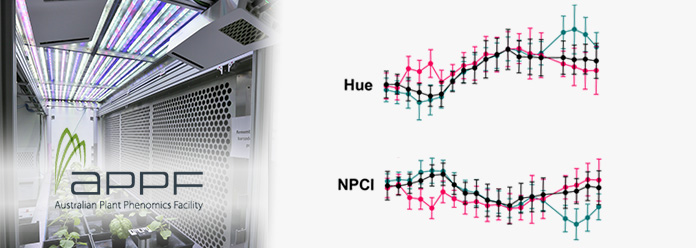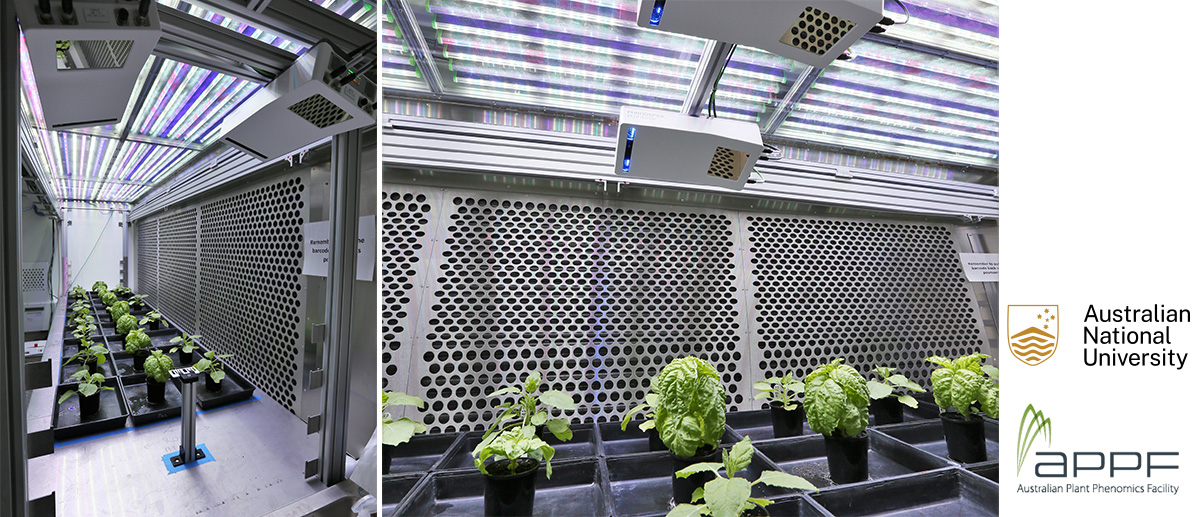|
APPF creates a digital phenotype library to build machine learning algorithms for plant stress identification
Australia
June 21, 2022

At the ANU node of the APPF, we acquired a Phenospex PlantEye DualScan F500 in November 2019 which was installed into one of our Photon System Instruments Growth Capsules, shipping containers which serve as high-precision controlled environments for plant growth. To date, the PlantEye has been used in a research project with Australian tobacco species Nicotiana benthamiana. As part of the project, we grow N. benthamiana in a range of environmental conditions to create a diverse collection of plant phenotypes. The plants are scanned regularly with the PlantEye to capture morphological and spectral phenotypic responses over time. We opted for a DualScan system for this work because N. benthamiana has a complex “bushy” plant architecture and a single sensor would not have been able to sufficiently capture the 3D structure of the plant due to leaf occlusion.
Analysing Phenospex data is intuitive and does not require complicated data pipelines
Ultimately, the project aims to build and train Machine Learning algorithms that can identify the type of environmental stress the plants experience based on their morphology and/or spectral reflectance to provide specific feedback to the grower. Training these models requires datasets from hundreds of plants and capturing this amount of data manually would be very challenging and would involve large amounts of plant material and staff time. The PlantEye provided non-invasive scanning to provide this data.
 ANU APPF digital plant phenotyping platform of Phenospex in growth chamber ANU APPF digital plant phenotyping platform of Phenospex in growth chamber
More news from:
. APPN - Australian Plant Phenomics Network
. Australian National University (ANU)
Website: http://www.plantphenomics.org.au/ Published: June 21, 2022 |
|
The news item on this page is copyright by the organization where it originated
Fair use notice |